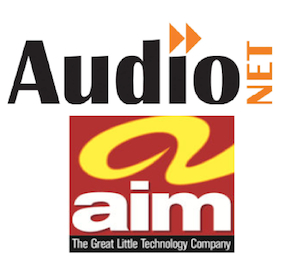Audio delivery company AudioNET has contracted radio software specialist All In Media (AIM) to build the first software tools to deliver commercials that meet the mandated file and screen standards for Australia’s digital radio stations. The software, called Pinata, ensures standards compliance before commercials are sent to stations.
AudioNET Managing Director Dave Cox has told radioinfo:
“Digital radio is broadcasting, radio sets are selling and listeners are
listening, but no-one can advertise without a Pinata. . . The specifications from Commercial Radio Australia (CRA) are very clear on what’s required to meet the standards for dispatching commercials in the digital radio era, and we intend to be the first.
“AIM’s expertise is building software for radio stations and our expertise is
radio dispatch. The Pinata tools are being tailored specifically to integrate with AudioNET, so our clients can easily package up all the elements for a
digital radio commercial and dispatch them securely.
“At the other end, it will be just as easy for radio stations to unpack the
audio and other elements, ready for broadcast.”
Because commercials made for digital radio may have any combination of one piece of text, one image, and one piece of audio, digital radio requires synchronisation of two play-out systems: one for the audio, and one for the text and images. It can get complex for clients and agencies trying to get to grips with all the new technical requirements, which is the problem this new software solves.
At the 2008 CRA Conference, Bill Barrington and James Douglas proposed a set of standards, that were eventually adopted for the Australian radio industry, to solve the potential problem of out of sync audio, text and pictures. Once again Australia is leading the world in this area of digital radio development.
The Pinata software checks and converts all content to the Australian Commercial Content Standards which mandate that audio should have a 16 bit, 48 kHz, uncompressed PCM audio file standard, where 30 seconds of audio is about 5.6Mb in size. DLS text should be 128 characters maximum per label and images must be in JPEG, PNG, or APNG with a maximum file size of 23 kilobytes and a screen ratio of 320 pixels wide x 240 pixels high. Animation must be no more than 10 frames per second.
AIM Technical Director Jason Malaure says AudioNET is the first
Australian dispatch company to recognise the benefits of embracing the
new digital radio dispatch standards and tools:
“These tools protect audio quality and creative integrity. Clients don’t
need extra passwords, new work practices or a PHD to use them. All the hard work is being done behind the scenes by the software, and
we aim to make it as user-friendly as possible.
“AIM provides software for digital radio in Europe, Canada and Asia as
well as Australia, and we are very impressed with the way CRA has solved
the problem of managing different combinations of audio, text and images
for digital radio campaigns.”
Commercial elements are tested to ensure they comply with the content standards when they are loaded into the Pinata. The software’s audit log tracks any changes or edits, contact details for all parties are logged, and a check list ensures the spot is complete before dispatch. When the file is received at a radio station the Pinata carting tool separates
the audio, images and text, for loading into the separate broadcast systems.
radoinfo strives to keep you up to date with the latest radio technology developments. Don’t forget to go to our Technology Pages from time to time to get updated with all the products and technological developments we cover.

